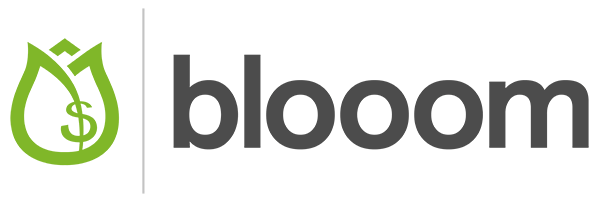
IRS data has shown that Americans lose approximately $5.7 billion per year on early withdrawal penalties when they take out funds from their 401k Retirement Plans or IRAs before meeting the minimum age requirements (59 ½). In 2020, Section 2202 of the Coronavirus Aid, Relief, and Economic Security Act (CARES Act) created an exemption for early distributions related to the coronavirus pandemic in which individuals could withdraw up to $100,000 from their retirement accounts without being subject to the 10% early withdrawal penalty (though they would have to count the distributions as part of their income for tax-reporting purposes for the next 3 years).
To qualify for the no-penalty early withdrawal – which was extended into 2021 thanks to the end-of-December Consolidated Appropriations Act – you would have to demonstrate how you’ve been financially impacted by Covid-19. This could mean a diagnosis requiring quarantine or medical leave for yourself or a family member, Covid-related employment issues (industry shutdown, unable to work due to childcare conflicts, reduced working hours), or a loss of business income resulting from the pandemic.
Early Retirement Withdrawals
If you don’t qualify for the penalty-free early retirement withdrawal option, you could still withdraw funds from your retirement accounts, though you’ll likely be subject to the 10% early withdrawal fee. Although personal finance professionals typically recommend against borrowing or withdrawing from your retirement funds before actually retiring from the workforce, there are some situations where this would be an entirely reasonable option.
Let’s explore how the early withdrawals could potentially impact you, depending on which type of retirement account you withdraw from.
Early Withdrawals from a 401k Retirement Plan
The IRS allows for early withdrawals from 401k Retirement Plan accounts in the case of “immediate and heavy financial need.” Qualifying events include: paying for medical care expenses (self, spouse, dependent), costs related to purchasing a principal residence (not investment properties), paying tuition and related educational expenses for up to 12 months, payments on mortgage or rent to avoid eviction or foreclosure, funeral expenses, and/or home repair expenses that would qualify for the IRS casualty deduction.
The IRS website also notes that, for 401k Retirement Plan early distributions, the “amount of an immediate and heavy financial need may include any amounts necessary to pay any federal, state, or local income taxes or penalties reasonably anticipated to result from the distribution.” In other words, if you need to withdraw, say $10,000 to cover a hospital bill, you could also withdraw another $1,000 to cover the 10% early withdrawal penalty instead of covering it out-of-pocket. There are some instances besides Covid-19 that may be eligible for a penalty-free withdrawal; consult the IRS’s website for more specific details.
401k Retirement Plan Loans
Did you know that you could take out a temporary loan from your 401k Retirement Plan account instead of permanently withdrawing the funds? This option is available through some employer-provided 401k Retirement Plans, and if yours is eligible, you can generally borrow up to 50% of your vested account balance ($50,000 maximum limit).
If you chose the 401k Retirement Plan loan route, you’d be expected to make substantial, regular repayments to your 401k Retirement Plan on at least a quarterly basis. Be sure to thoroughly research other options available to you before opting for the 401k Retirement Plan loan since this can have negative implications for your portfolio and potentially set back your retirement goals if you’re not careful.
Early Withdrawals from a Traditional IRA
You cannot legally take out a loan from an IRA account, but you can withdraw funds before age 59 ½ by paying the 10% early withdrawal penalty. Qualifying incidents for traditional IRA withdrawals include first home purchase, health insurance coverage. At the same time, you’re unemployed, expenses related to the birth or adoption of your new child, unreimbursed healthcare expenses, and college tuition and related costs.
A benefit to withdrawing from a traditional IRA instead of a 401k Retirement Plan is that you’re generally not subject to income taxes on the amount withdrawn.
One great resource to manage your 401k retirement plan is blooom. Let the experts at bloom take a free peek at your 401k. Get real advice on how it’s doing and how it could be performing better.
When you become a member, blooom then makes trades to optimize your account based on your goals. Blooom can manage your 401k, 401a, 403b, 457, or Thrift Savings Plan (TSP). Be sure to read my review of blooom.
Early Withdrawals from a Roth IRA
Withdrawing from a Roth IRA when you’re in a financial pinch can be a lifesaver because you don’t have to pay taxes or early withdrawal penalties as long as you only withdraw contributions (earnings on those contributions will be subject to taxes/penalties). You won’t be able to repay the money – as you could with a 401k Retirement Plan loan – but this is nevertheless a good backup option to consider if your emergency savings fund runs out.
Since withdrawing money early means you’ll miss out on valuable earnings opportunities for an account that’s already limited to $5,500 to $6,500 in maximum annual contributions, it’s generally recommended that individuals avoid withdrawing from their Roth IRAs unless they’ve run out of options to cover their expenses.
If you’re looking for places to keep traditional investment accounts, you might want to check out investing with M1 Finance, Robinhood, Betterment, or Stash Invest.
M1 Finance simplifies the investment process for beginning and experienced investors alike. M1 Finance does not charge a fee per trade, and it gives you the option of taking more control over your investments if you want them (and less if you don’t). M1 Finance is great for buy and hold investors.
Withdrawing funds early from any retirement account should be approached with a great deal of caution and careful planning before deciding your next step. It can be tempting to withdraw from an account you won’t be able to access for another 10-30 years, but don’t ignore your long-term retirement goals when assessing the pros and cons of pulling funds from a retirement account before age 59 ½.

